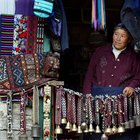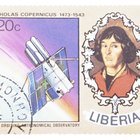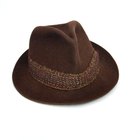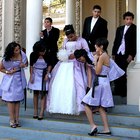
"The Flamenco Dancer (II) / La danseuse de flamenco (II)" is Copyrighted by Flickr user: mcohen.chromiste (Michael Cohen) under the Creative Commons Attribution license.
The history of hispanic clothing was born from indigenous lands and trickled through global society over time. Hispanic clothing has culturally intermingled with other cultures. Traditional Hispanic clothing is still being worn in smaller towns drenched in Hispanic heritage.
Peasant Influence
The Mexican peasant dress surfaced in the early 17th century, when a girl named Catarina de San Juan traveled from the Eastern part of the world to Mexico and married Domingo Suárez. Her clothing resembled a dress with short, puffy sleeves with very elaborate embroidery, which became a common thread on Hispanic clothing.
Dance Influence
The Mexican folk dance is paramount for women whirling in circles on the dance floor holding on to their dresses. The dancers wear custom flared dresses, exploding with bright colors, or flared skirts that would make a tornado-like motion on the floor. Today, folk dancers still wear this dress at festivals and carnivals.
Musical Influence
The mariachi relates to the core of Mexico's music, as an ensemble of brass, wind and percussion marking Hispanic's colonial period and developing history. The matching-colored Charro costume, which was traditionally a shirt, vest and jacket with embroidery on it, was worn by the mariachi.
Cultural Influence
The Mayan and Aztec culture have been living in the heart of Mexico for thousands of years. Mayan and Aztec men wore a breechcloth called a "maxtlatl," and a cape called a "tilma." After the Spanish invasion, men began to wear trousers and shirts. They also wore "serapes," which were blanket-like capes.
Spanish Influence
After the Spanish invasion, a birth of European styles began to trickle into Hispanic clothing styles. One popular centerpiece brought on by this cultural change was the sombrero. Its landmark features include a wide brim, which protected people from the sun.
Related Articles

What Are Psychedelic Clothes?

What Kind of Clothes Do They Wear in ...

Traditional Chilean Wedding Attire

Traditional African Wedding Attire

Hat Trends of the Seventies

What Do Chinese Women Wear?

What Kind of Clothing Do People in Mali ...

How to Determine Measurements for ...

What Kinds of Clothes Do They Wear in ...

About Apache Indian Clothing

Facts About Clothing in China

Military Dress Blues Setup Guide

Liberian Fashions, Styles & Wedding ...

What Kind of Clothing Do Peruvians Wear?

Traditional Japanese Hats for Men

Indigenous Clothes in Bolivia

What Type of Clothes Do Mexicans Wear?

What Kind of Clothes Do El Salvadorans ...

Types of Felt Hats

Mexican Quinceanera Traditions
References
Writer Bio
Stephanie Flood began writing professionally in 2008. She has been published in local magazines including "Flagstaff Live" and "The Noise." Her work also appears on various websites. She earned a Bachelor of Science in journalism from Northern Arizona University. Flood's writing covers subjects including health, wellness, spirituality, travel, living and outdoors.